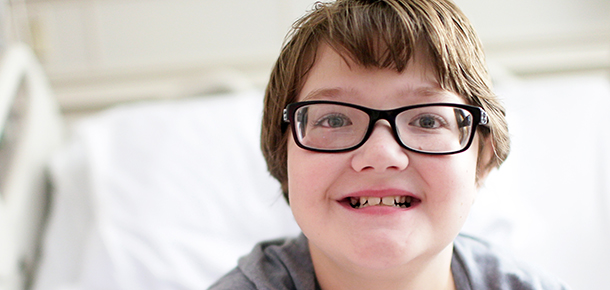Now that school is back in session and students have had a chance to settle in, a lot of parents share the same worries over their child’s progress. Perhaps these sound familiar:
- How well is my child getting along with his/her peers and behaving in class?
- Is he/she adjusting well to a new teacher, classroom or school?
- Has my son/daughter established good study or homework habits?
- What can I do to help my child make new friends, feel comfortable and succeed?
The list goes on and on. But, in addition to all these valid concerns, parents of children with an autism spectrum disorder (ASD) also tend to face a slightly different set of challenges depending on their child’s condition.
Recently, through the Autism Speaks blog, a parent presented a particularly unique, but not uncommon challenge to me. In summary, the question was: “How can I get my daughter to wear her glasses?”
A behavioral therapist, like those in The Kelly O’Leary Center for Autism at Cincinnati Children’s, can work together with families to help get past issues like these that may arise when a child with ASD encounters something new, unknown or unfamiliar. While the object of a child’s aversion will vary from situation to situation, a common approach to correcting it typically applies.
If your child is having trouble adjusting to something new, like wearing glasses, here are few beginning steps you can take to help her/him get past the difficulty:
Start slowly and build a tolerance
It will take time for your child to adjust to new behaviors and/or routines, especially when these involve sensory objects like eyeglasses. As a parent, it’s important to prepare yourself mentally to be patient with the process. Go slowly, practice and gradually build momentum before taking any big leaps. If glasses are an issue, start first by taking the lenses out of an old pair of glasses before purchasing an expensive prescription pair.
Keep practicing, but make it short and sweet
Once you’ve identified a good way to practice, make practice part of your child’s daily schedule. Keep your practice sessions short and focused on the task at hand for that particular day. It might help to practice at the same time each day, but remember the goal is for your child to get used to the new behavior or routine so that it becomes a regular part of their life. If it’s glasses, you eventually want your child to wear them all the time, but in the early stages it’s OK to take an occasional day off of practice.
Celebrate the victories with rewards
Use small rewards as a way to motivate your son or daughter throughout the practice. Sensory rewards, such as a hug, often pair well with sensory issues. It’s also great to use small prizes, stickers, or small snacks as positive reinforcement, but don’t forget to offer praise and encouragement as a form of reward as well. After you’ve discovered the rewards that work best, be sure to have them readily available when your child succeeds.
Editor’s note: Information in this post first appeared in an expert-advice blog series at www.autismspeaks.org. Cincinnati Children’s is a member of the Autism Speaks Autism Treatment Network (ATN).






These are some fantastic tips; after all, it can be quite difficult sometimes to help parents adjust to children with autism. However, I do like that the article recommends rewarding children in small ways for good behavior. After all, a hug or a sticker can go a long way towards making children feel more successful.